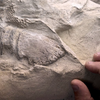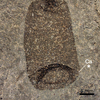The Mystery of the Yixian Formation

Sapeornis chaoyangensis from the Yixian Formation
Post Author - Ellis Nolan
With new technologies and techniques constantly being developed, our knowledge of the past is ever-changing. This is particularly true in the case of paleontology: dinosaurs can’t exactly tell us what they were doing when they were fossilized, and as such, scientists are often making the best of an incomplete set of facts. Such is the case with the Yixian Formation in northeastern China, also known as the “Chinese Pompeii.”
The Yixian Formation is a geological formation in China's Liaoning province. It is estimated to be between 120 and 130 million years old, and has yielded hundreds of uncommonly well preserved fossil specimens, including skeletons of feathered dinosaurs. The formation has been paramount to numerous paleontological studies, but a question still remains: how are these creatures so well preserved?
Scientists’ initial explanation gave way to the formation’s nickname. It was originally thought that the creatures and critters fossilized in the Yixian Formation perished because of volcanism, buried in ash like those who perished after Mount Vesuvius erupted in 79 CE, hence the “Chinese Pompeii.” Unlike Pompeii, whose citizens’ skeletons posed in expressions that bring to mind Edvard Munch, the fossils of the Yixian Formation bear no such appearance. Such seemingly calm fossil poses were in direct contradiction to a theory of death-by-lava or ash.

Psittacosaurus lujiatunensis and Repenomamus robustus fossilized in the midst of combat
To further compound the confusion, a recent study suggests many of the fossils in the formation originate from an era where there was little volcanic activity. Using a new dating technique called chemical abrasion isotope dilution thermal ionization mass spectroscopy or CA-ID-TIMS, the researchers were able to determine the fossils originated 125.8 million years ago, and were consistently centered around a time period of 93,000 years, too short to coincide with known major volcanic activity.
The researchers have a different hypothesis for how these fossils got to be so well preserved, and that accounts for the lack of volcanic activity at the time. Since many of the fossilized skeletons appear to be in sleeping positions (with one even appearing to be a surprise attack in one animal’s den), scientists now believe burrow collapses might be how these animals perished. Common even in modern day, the researchers’ hypothesis is compounded by other geological features of the Yixian Formation, which suggest the fossils formed during a particularly wet period in the region, making collapses even more common. Furthermore, unusually well-preserved fossils have also been found in regions of similar climate.
We’ll probably never know for certain how these dinosaurs perished, or how they were fossilized so intact. In this case, time, new techniques, and some good old fashioned deductive reasoning hopefully brought scientists closer to understanding the world dinosaurs inhabited. Hopefully time will bring a snappier name for CA-ID-TIMS, too.
Featured Product
Joe Frazier Boxing Glove
Cool Things!

Is “Paul is Dead” Dead?: Unpacking One Of Pop Culture’s Most Enduring Conspiracy Theories

Scientists Discover Hooves and Skin in Preserved Dinosaur "Mummies!"
A dinosaur discovery just in time for Halloween! In a new analysis of a group of fossils from Wyoming, Scientists have determined this group of fossils are dinosaur “mummies,” with preserved skin and even hooves.

Scientists Record a Bat Catching Birds Mid-Flight!
Bats, birds, screeches, oh my! In a reverse-Hitchcock twist, a new study reveals that a species of European bat catches and eats birds mid-flight.
Specimen Deep Dives

The House that Ruth Built: The Story of the Old Yankee Stadium

The Queen of the Skies: the Story of the Boeing 747

Old Ironsides: The USS Constitution and the Start of the U.S. Navy
Long Form Articles

The Artist Behind the Macintosh: Susan Kare and Apple Computers
While the two Steves, Jobs and Wozniak, are the most well known faces behind Apple computers, equally important to the products and culture of the company were those who crafted the experience of using their computers through design. The most notable of these visual architects was Susan Kare, a designer responsible for “humanizing” Macintosh computers.

Can I Lick It? Yes You Can!
Have you ever been unable to tell if a fossil was really a fossil, but you were too embarrassed to admit it? Have you ever wanted to lick a fossil just because, but you didn’t want to risk judgment from your peers? Well, good news! You can kill two birds with one stone! Licking a fossil can actually help you determine if it’s the real deal or just another rock.

Is It Legal To Own a Meteorite: How to Start Your Outer Space Collection!
Meteorites are some of the rarest geological specimens to be found on Earth. Of course, since these stones are not of our world, purchasing them can sometimes be a confusing process. Is it legal to own a meteorite? In short, yes! Read on for help starting your cosmic collection!

















